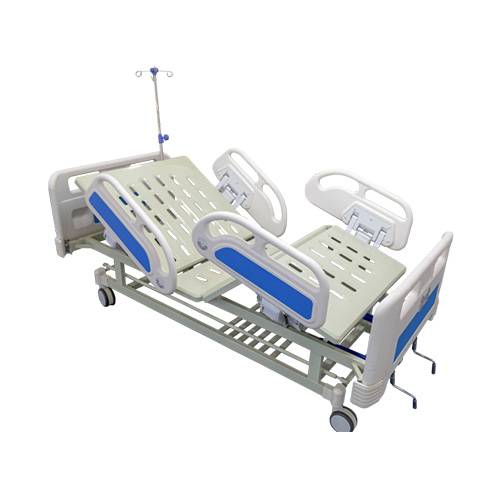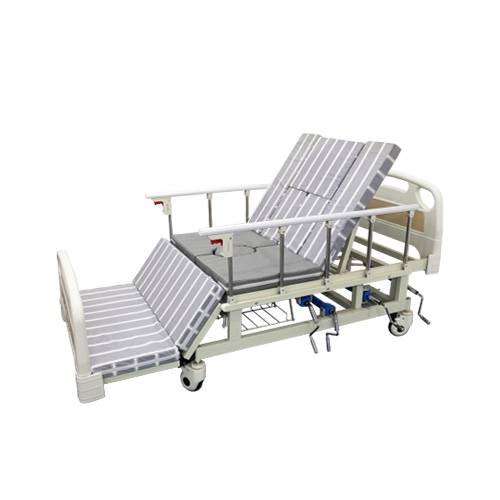Adresse
304, rue Cardinal Nord
Centre Dorchester, MA 02124
Heures de travail
Du lundi au vendredi : 7h - 19h
Week-end : 10h - 17h
Adresse
304, rue Cardinal Nord
Centre Dorchester, MA 02124
Heures de travail
Du lundi au vendredi : 7h - 19h
Week-end : 10h - 17h

The efficiency and effectiveness of patient care are significantly influenced by the equipment used, particularly the hospital emergency bed.
Bienvenue sur mon blog !
Avant de plonger dans le contenu, j'aimerais que vous me rejoigniez sur mes plateformes de médias sociaux où je partage plus d'informations, interagis avec la communauté et publie des mises à jour. Voici comment vous pouvez me contacter :
Facebook :https://www.facebook.com/profile.php?id=100071234835011
LinkedIn :https://www.linkedin.com/company/74943205/admin/dashboard/
YouTube :www.youtube.com/@shandongexpertmedicalequip4695
TikTok :www.tiktok.com/@expertmedical
Commençons maintenant notre voyage ensemble. J'espère que vous trouverez le contenu ici instructif, engageant et utile.

In the fast-paced environment of a hospital emergency department (ED), every second counts. The efficiency and effectiveness of patient care are significantly influenced by the equipment used, particularly the hospital emergency bed. Modern hospital emergency beds are far more than just a place for patients to lie down; they are sophisticated pieces of medical technology designed to optimize patient comfort, safety, and facilitate efficient medical procedures. This blog post will delve into the numerous benefits of modern hospital emergency beds, highlighting their critical role in contemporary emergency care. We will explore how these beds contribute to improved patient outcomes, enhanced staff efficiency, and a more streamlined emergency department workflow.
Modern hospital emergency beds boast a range of features designed to address the unique demands of emergency care. These features translate into tangible benefits for both patients and healthcare providers.
Patient comfort is paramount, even in emergency situations. Modern hospital beds are designed with ergonomic principles in mind, offering features such as:


Modern hospital beds are designed to not only benefit patients but also enhance the efficiency of healthcare staff.
The design and features of modern hospital beds play a crucial role in optimizing the overall workflow of the emergency department.









While all hospital emergency beds share core functionalities, some variations cater to specific needs within the ED.
Trauma beds are specifically designed to accommodate patients with severe traumatic injuries. They often feature:
Bariatric beds are designed to safely and comfortably accommodate patients with obesity. They feature:
Pediatric emergency beds are designed to meet the unique needs of children. They often feature:
The following table summarizes some key features and their variations across different types of hospital emergency beds.
| Caractéristique | Standard Emergency Bed | Trauma Bed | Lit bariatrique | Lit pédiatrique |
|---|---|---|---|---|
| Capacité de poids | Standard | Haut | Très élevé | Inférieur |
| Surface Width | Standard | Standard | Wider | Narrower |
| Radiolucent Surface | Facultatif | Standard | Facultatif | Facultatif |
| Quick Release Mechanisms | Facultatif | Standard | Facultatif | Facultatif |
| Specialty Attachments | Facultatif | Standard (Trauma) | Facultatif | Facultatif |
| Child-Friendly Design | Non | Non | Non | Oui |
Proper maintenance is crucial for ensuring the longevity and optimal performance of hospital emergency beds.
Regular cleaning and disinfection are essential for preventing the spread of infection. This includes:
Regular inspections and preventative maintenance are essential for identifying and addressing any potential issues before they become major problems. This includes:

The technology behind hospital emergency beds continues to evolve, with ongoing research and development focused on further improving patient care and staff efficiency.
Future hospital emergency beds are likely to feature increased integration with smart technology, such as:
Future designs will likely place an even greater emphasis on ergonomics and user-centered design, aiming to:
Moderne hospital emergency beds are indispensable tools in contemporary emergency care. Their advanced features contribute significantly to improved patient comfort, safety, and outcomes, while also enhancing staff efficiency and streamlining emergency department workflow. By understanding the various benefits and features of these beds, healthcare facilities can make informed decisions about their procurement and utilization, ultimately contributing to better patient care in the crucial setting of the emergency department. The continued advancements in technology promise an even brighter future for hospital emergency bed design, further optimizing their role in delivering high-quality emergency medical care.
What is the difference between a hospital bed and a hospital emergency bed?
While both are used in healthcare settings, hospital emergency beds are specifically designed for the unique demands of the emergency department. They typically feature enhanced maneuverability, quick release mechanisms, and integration with emergency equipment.
What are the key considerations when purchasing hospital emergency beds?
Key considerations include patient safety features, staff efficiency features, maneuverability, compatibility with existing equipment, and budget.
How can I ensure the longevity of my hospital emergency beds?
Regular cleaning, disinfection, inspections, and preventative maintenance are crucial for ensuring the longevity of hospital emergency beds.
Are there specific training requirements for staff using hospital emergency beds?
Staff should be trained on the proper use and operation of all features of the hospital emergency beds, including adjustments, controls, and safety mechanisms.
What are some future trends in hospital emergency bed technology?
Future trends include increased integration with smart technology, a stronger focus on ergonomics and user-centered design, and advancements in materials and manufacturing processes.